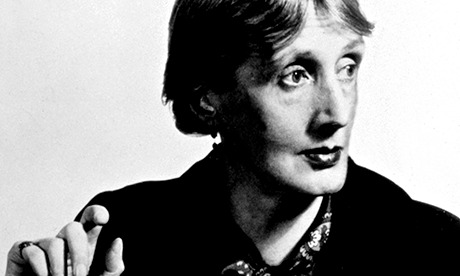
Perhaps it's a function of my awful tendency to reduce all of life to the level of iced buns and stews, but these days I associate Virginia Woolf mostly with food: with the underdone salmon in Mrs Dalloway; with the beouf en daube in To the Lighthouse; with her conviction, as outlined in A Room of One's Own, that "one cannot think well, love well, sleep well, if one has not dined well". In middle age, I'm more fascinated by her fraught relationship with her cook, Nellie Boxall, than with her particular brand of high modernism; I would rather ponder the fact that she once mistakenly baked her wedding ring into a suet pudding than her experiments with gender and narrative. How did this happen? I don't know. It's terrible! When I was young and desperate to play the femme sérieuse, my passion for Woolf was nothing if not ardent; she is one of very few writers whose work I can truly say I've read almost in its entirety. All those thousands upon thousands of words, and yet when I see her now, it's not at her desk solemnly tapping out The Waves, but in her kitchen, "delicately" turning Leonard's sausages with a pen holder!
Still, I'm not the only one. My find of the year so far is The Bloomsbury Cookbook by Jans Ondaatje Rolls, a new compendium of recipes and food-related paintings, prose and gossip starring Woolf and all the others. There is Vanessa Bell, whose rivalry with her sister induced her to take up bread-making (Woolf was a keen baker; she was also devoted to bottling and pickling); Dora Carrington, who taught herself to cook the better to take care of her beloved Lytton Strachey (his favourite dish was rice pudding, which he insisted on eating every day); Lydia Lopokova, the Russian ballet dancer who married Maynard Keynes and introduced him to piroshki pies; and Frances Partridge, whose Tipsy Chicken involved marinating the meat with gin. I had not thought there was anything more to be said on the subject of the Bloomsburys and their habits. But Ondaatje Rolls illuminates corners others have not thought to visit – the dark shelves of the pantry, the final blurry moments of a dinner party, the tray brought quietly to an invalid – and as a result, they start to seem vastly more likeable. Or they do to me. The generosity of their tables, their weaknesses for such treats as chocolate and cake, makes them seem more human. (Though the Keyneses were considered somewhat miserly when it came to food; they once served three grouse to 11 guests, an act of stinginess that delighted Vanessa Bell, her eyes gleaming "as the bones went round".)
Ondaatje Rolls warns readers that many of the recipes in her book are less precise than their modern equivalents and should be approached with caution. But so far, I've had great luck with everything I've tried. Angelica Garnett's recipe for gingernuts, included in honour of Mr Ramsay who, in To the Lighthouse, tries to win over his estranged daughter with such a biscuit, were deliciously spicy; a recipe for the chocolate creams (a Swiss roll by any other name) with which Virginia and Leonard Woolf celebrated Armistice Day in 1918, worked a treat. As I write, I'm fantasising about cooking a dinner like the one Clive Bell hosted for Picasso in 1919 (consommé à l'Indienne, saumon en surprise, poulet aux choux, glacé aux ruits), but will probably limit myself instead to making an onions au gratin loved by the critic Desmond MacArthur (simmer for an hour, then bake in a béchamel made with gruyère).
As I read The Bloomsbury Cookbook I was struck all over again by how powerfully food connects us to others, even those we never met – and by what it reveals of our personalities. There is something both cherishable and oddly piercing about the fact that poor old Dora Carrington put so much effort into serving high tea; that Virginia Woolf liked salt and Leonard a good pub pie; that David Garnett preferred his Cumberland sauce cold. To me, such details do the work of a good biography, or some of it, and in about half the time. We are what we eat. When Clive Bell's waistcoat button flew across the room during a society piano recital in 1923, it was a sign he'd been enjoying the work of his wife Vanessa's cook, Grace Huggens, just a little too much. But his real appetite, you gather, was for life; the humiliation, as Virginia Woolf put it, "brushed him only slightly", and his spirits remained "superb" even as his waistband groaned.
Jans Ondaatje Rolls will be at the Daunt Books Spring Festival on 28 March. www.dauntbooks.co.uk 0207-7224 2295. !

